Green Matters: The Environment and Sustainability Collection at the Lee Kong Chian Reference Library
Senior Librarian Sara Pek shares highlights from the Environment and Sustainability Collection at the Lee Kong Chian Reference Library.
— Paul Connett, Professor Emeritus of Chemistry, St Lawrence University, Canton, NY[^1]
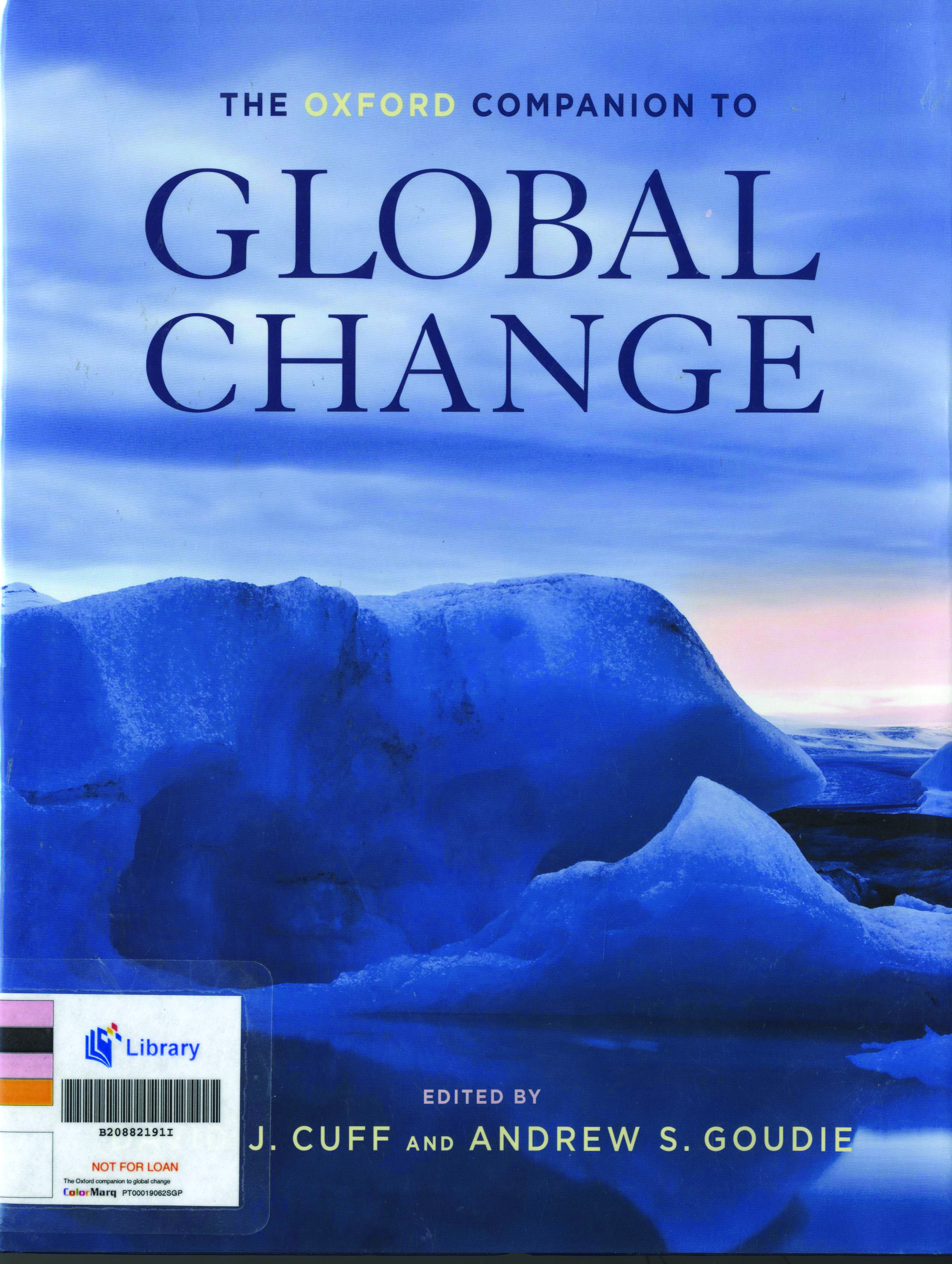
The first major study1 on the full impact of climate change on human life warns that the world is in the throes of a “silent crisis”. Published in June 2009, it claims that more than 300 million people are seriously affected by global warming today and that number will double by 2030.
We face many environmental challenges such as water shortages, pollution, global warming and consequent rising sea levels. As citizens of the planet Earth, we can and should take responsibility to save the environment. The Environment and Sustainability Collection at the Lee Kong Chian Reference Library aims to inform and provide insights and ideas on a broad spectrum of resources on major environmental trends and issues such as climate change, global warming, sustainable development, green business and buildings and clean technology. This article highlights selected publications from the collection.
Environment101
Environmental awareness is a hot topic today. To increase youth’s awareness of the living surroundings, schools are integrating environmental concepts into their curriculum. One useful resource that can help teachers, librarians, environmental educators and parents find authoritative information on building a library of environmental books, curriculum planning and story-time activities is Green Reads: Best Environmental Resources for Youth, K-12 (Wesson, 2009). More than 450 current fiction and nonfiction titles about the environment, including digital media, are covered.
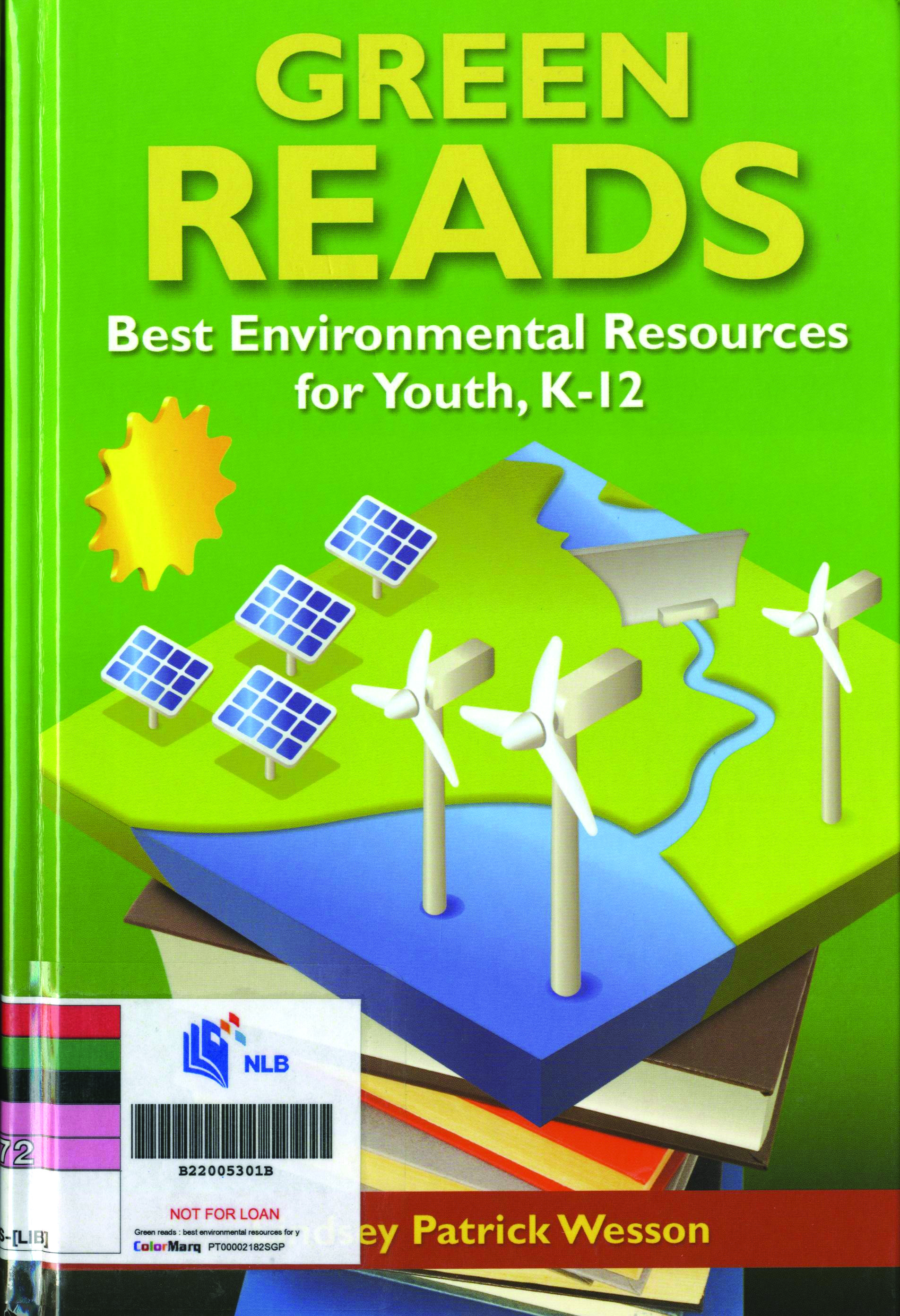
Students and professionals seeking to understand the environmental sciences can refer to a range of references on the topics. The Oxford Companion to Global Change (Goudie & Cuff, 2009) is a well-balanced coverage of Earth systems and human factors. It examines key environmental events, trends and issues related to global change. The 2007 Report of the Intergovernmental Panel on Climate Change (IPCC), which assesses the scientific, technical, environmental, economic and social aspects of climate change, is discussed.
Numerous heroes of the environment have cared intensely about the environment. Works on these prominent environmental leaders and visionaries, activists, scientists, innovators and entrepreneurs such as Rachel Carson, Aldo Leopold, Jane Goodall, John Muir, David Attenborough, Al Gore, Tim Flannery, Lester Brown and Henry David Thoreau can be found in the library.
One book that many considered as the most important environmental book of the 20th century is Rachel Carson’s Silent Spring (1962, 1994 reprint). Carson alerts readers on the widespread use of chemical pesticides destroying wildlife and posing serious threat to public health. The brave woman faced condemnation and strikes by the chemical industry to ban the book. In the end, she succeeded in creating public awareness of the environment, which led to changes in government policy and inspired the modern ecological movement.
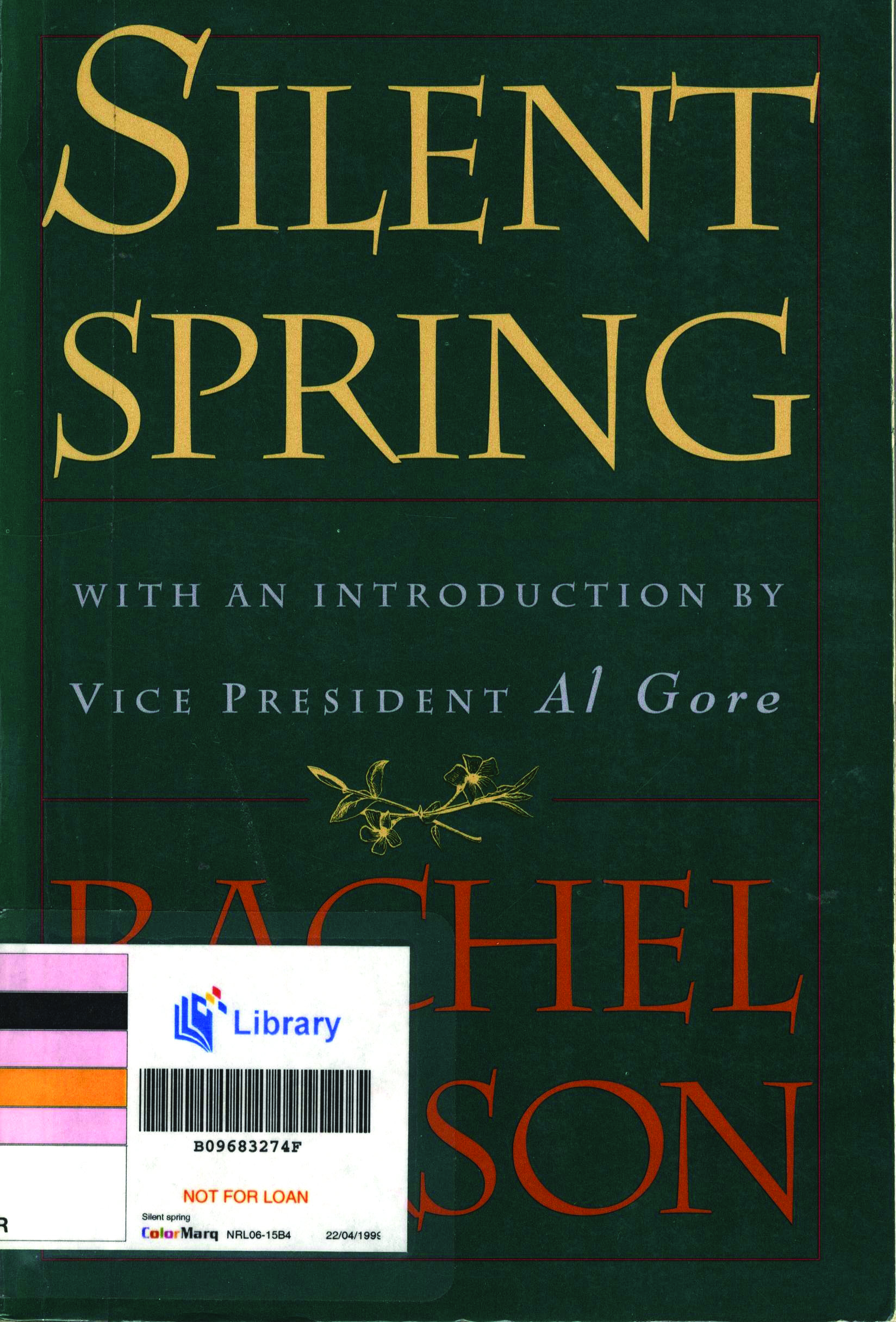
Earth Day is celebrated every year. It is a special day to appreciate the planet Earth and be environmentally conscious. The first Earth Day in 1970 was often thought as one of the factors leading to the field of environmental ethics. A good introduction to this increasingly urgent topic is Environmental Ethics: An Anthology (Rolston & Light, 2003). This text is compilation of classical and contemporary essays on key environmental debates and issues.
Cities throughout the world face the common challenge to balance sustainability, economic progress and good governance. There are many discussions addressing the subject of environmentally sustainable development such as: Resilient Cities: Responding to Peak Oil and Climate Change (Newman, Beatley & Boyer, 2009) and World Cities: Achieving Liveability and Vibrancy (Ooi & Yuen, 2010).
The largest and most discussed report in recent years is Stern Review on the Economics of Climate Change (Stern, 2007). This 700-page report is a comprehensive analysis of the economic aspects of environmental issues. Compiled by an economist, the review gives an optimistic assessment for the future but warns that the world must act now on climate change to avoid devastating economic consequences.
A deluge of eco-literature has been added to the library shelves. Some books carry weight for the specific message they convey. Others stand out for the clarity they bring to environmental and climate issue such as global warming, carbon footprints and greenhouse emissions. Many popular works have become instant classics.
Some of these green books include: Our Choice: A Plan to Solve the Climate Crisis (Gore, 2009), Hot, Flat, and Crowded: Why We Need a Green Revolution – And How It Can Renew America (Friedman, 2008), Earth in Mind: On Education, Environment, and the Human (Orr, 2004) and Eco Barons: The Dreamers, Schemers, and Millionaires Who Are Saving Our Planet (Humes, 2009).
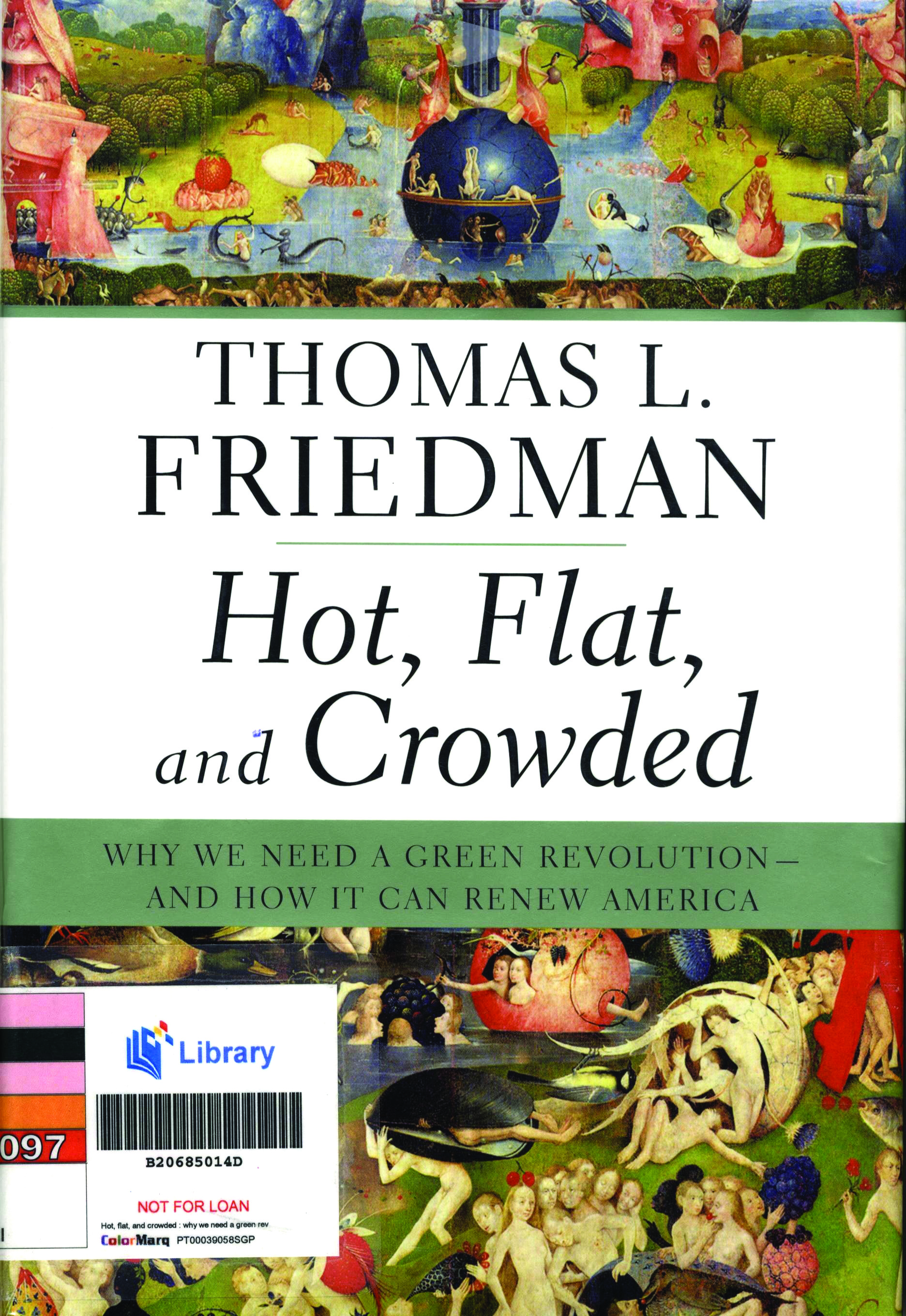
Global Race for Clean Resources
— United States President Barack Obama’s speech[^3] on the economy and job creation ideas on 8 December 2009.
The benefits of producing clean and sustainable power from renewable energy sources have received growing attention worldwide, including in Singapore. The International Energy Agency (IEA) reports2 that nations must invest US$37 trillion in energy technologies by 2030 to avoid climate catastrophe and meet energy needs. Asia’s rising “clean technology tigers”3 – China, Japan and South Korea – are poised to win the clean energy race with their hefty investment in clean energy infrastructure and technology.
Since identifying clean technology as a strategic part of a sustainable economy, the Singapore government has committed $700 million4 for R&D and manpower training to grow the sector. Clean technology or “clean tech” is applied in a broad range of industries, including energy, water, manufacturing, advanced materials and transportation. Examples of clean tech are solar and wind energy, water filtration and electric vehicles.
To support the information needs of this rapidly emerging field, the library has built a collection of key publications on market trends, investment, technological and economic aspects of renewable energy. Recent titles include: Global Energy Transformation: Four Necessary Steps to Make Clean Energy the Next Success Story (Larson, 2009), Clean Money: Picking Winners in the Green Tech Boom (Rubino, 2009) and The Clean Tech Revolution: Discover the Top Trends, Technologies, and Companies to Watch (Pernick & Wilder, 2008).

The push for environmental and water technologies (EWT) industry has also thrown up new and exciting challenges for those in the engineering fields. Job seekers and practising engineers looking to strengthen their career prospects can refer to titles like Alternative Energy Systems and Application (Hodge, 2010) and Energy Systems Engineering: Evaluation and Implementation (Vanek & Albright, 2008), The Yaws Handbook of Properties for Environmental and Green Engineering (Yaws, 2008) and Handbook of Environmental Engineering Calculations (Lee & Lin, 2007).
Online databases,5 such as the IEEE/IET electronic library, SpringerLink, Nature.com and Proquest Science, offer premium content from international journals and reports. Library users can access these resources at the library or at home. Some of the periodicals available are Energy Design Update, Energy Compass, Energy Engineering, Energy Intelligence, The Energy Journal, The Journal of Energy Markets, Water & Wastewater International, Water Environment Research and Journal of Water Resource and Protection.
Going Green
Green is now mainstream. A National Geographic survey, Greendex6, shows that consumers are buying more green products even during the economic crisis of 2008. Companies are introducing new greener products. Books on green marketing and green business like The Truth About Green Business (Friend & Kordesch & Privitt, 2009), Harvard Business Review on Green Business Strategy (Harvard Business Review, 2007) and Strategies for the Green Economy: Opportunities and Challenges in the New World of Business (Makower & Pike, 2009) are relevant to this segment of readers.
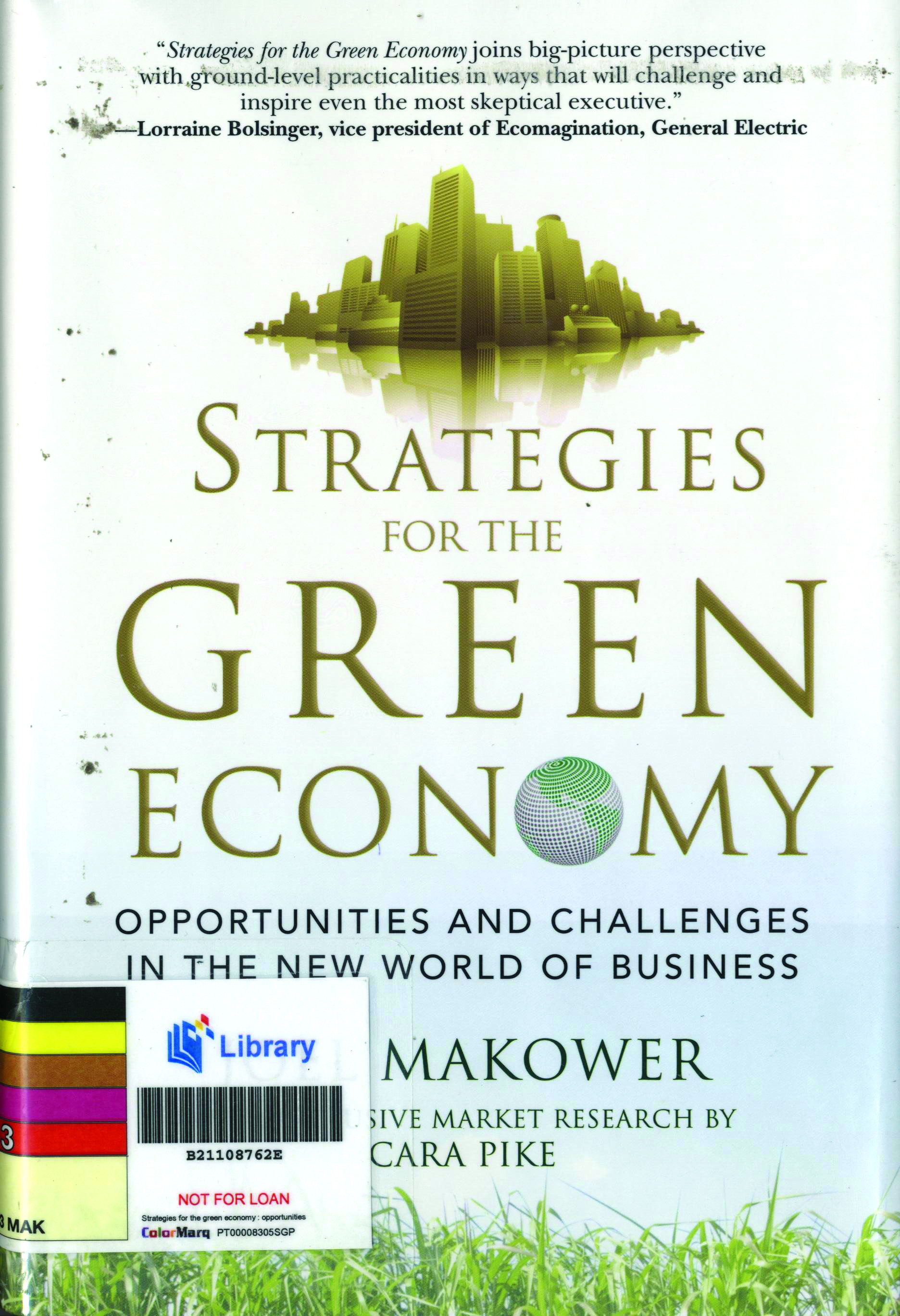
However, media experts7 warn that marketing strategies dubbed “greenwashing” could be leading the eco-conscious astray as more companies are making false or misleading green marketing claims.
With pressing interest in green economy, organisations are adapting to new environmental policy and regulations. Others are developing strategies for sustainable business or “greening” their operation. Policymakers and business stakeholders wondering how policy decisions come about can be better informed from books such as Environmental Policy Analysis and Practice (Greenberg, 2007). The author explains clearly how all policy considerations are broken down and tools that are widely used in policy analysis.
The Singapore government has been a key driver for environmental change since independence. After 40 years of dedicated green and clean programmes, the country has won numerous international accolades. Readers interested to trace the remarkable transformation of Singapore can refer to books about Singapore’s experience with environmental management and pollution control.
Energy-efficient buildings are universally recognised to reduce greenhouse gas emissions. A Singapore Green Building Council (SGBC) was set up to drive the green-buildings movement in Singapore.8 The Building and Construction Authority (BCA) has announced ambitious efforts to have 80% of Singapore‘s buildings attain minimum green-certified standards by 2030. The “green collar” sector is expected to grow by leaps and bounds. There will be strong demand for manpower in the development, design, construction, operation and maintenance of green buildings.
Environmental planners, consultants and plant operators looking for references on energy-efficient buildings, green architecture and ecocity will find many new titles on the topics, for example, The Green Building Bottom Line: The Real Cost of Sustainable Building (Melaver & Mueller, 2009), Eco Master Planning (Yeang, 2009) and Green Architecture Now! (Jodidio, 2009).
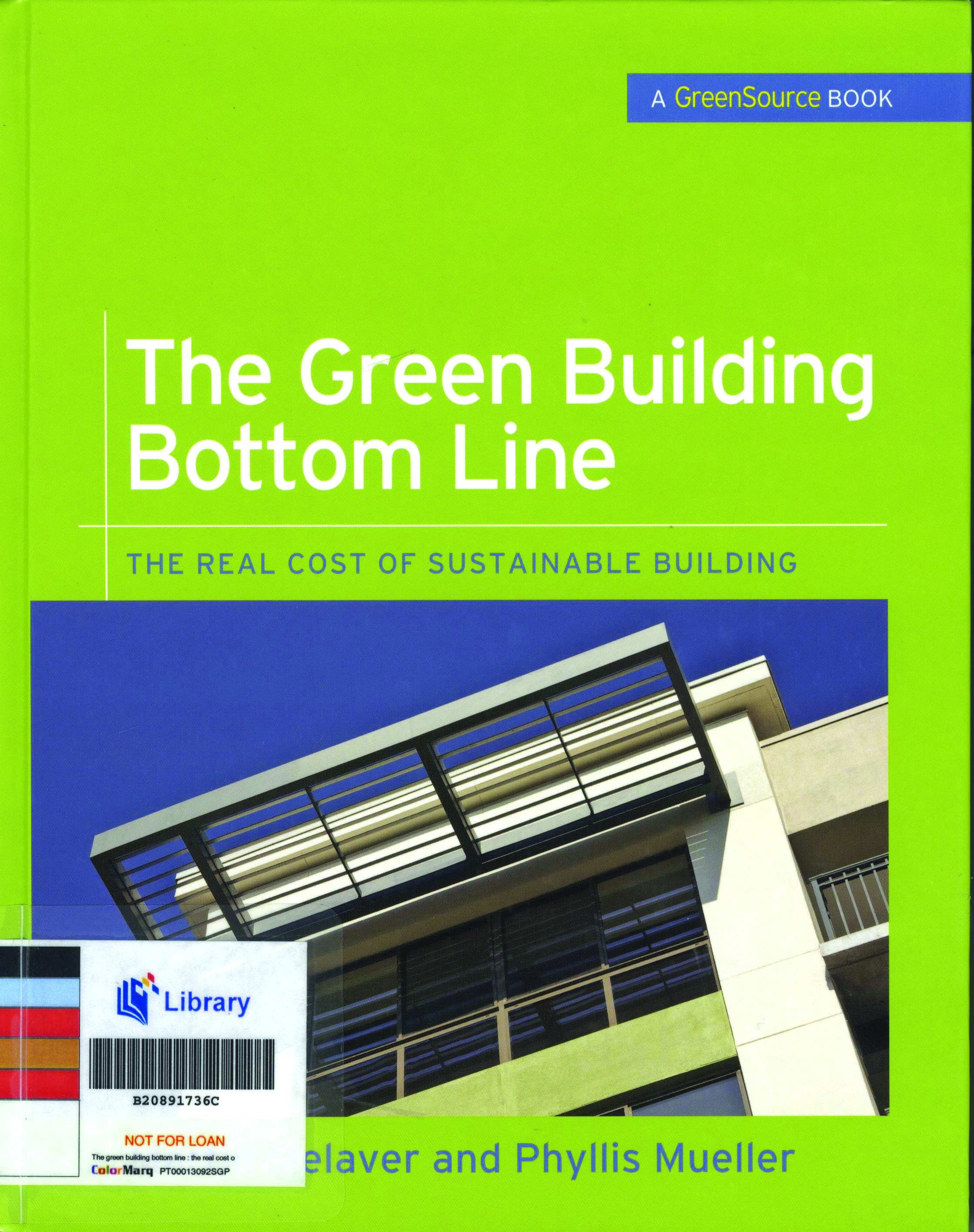
Green vehicles will soon hit the roads in Singapore. A multi-agency taskforce led by the Energy Market Authority and Land Transport Authority has embarked on national electric vehicles (EVs) test-bedding programme.9 It will allow testing of different EV prototypes and charging technologies and research into vehicle-to-grid power. Anyone interested to know the technology and issues behind EV can refer to books such as Future Cars: Bio Fuel, Hybrid, Electric, Hydrogen, Fuel Economy in All Sizes and Shapes (Bethscheider-Kieser, 2008) and Plug-in Electric Vehicles: What Role for Washington? (Sandalow, 2009).
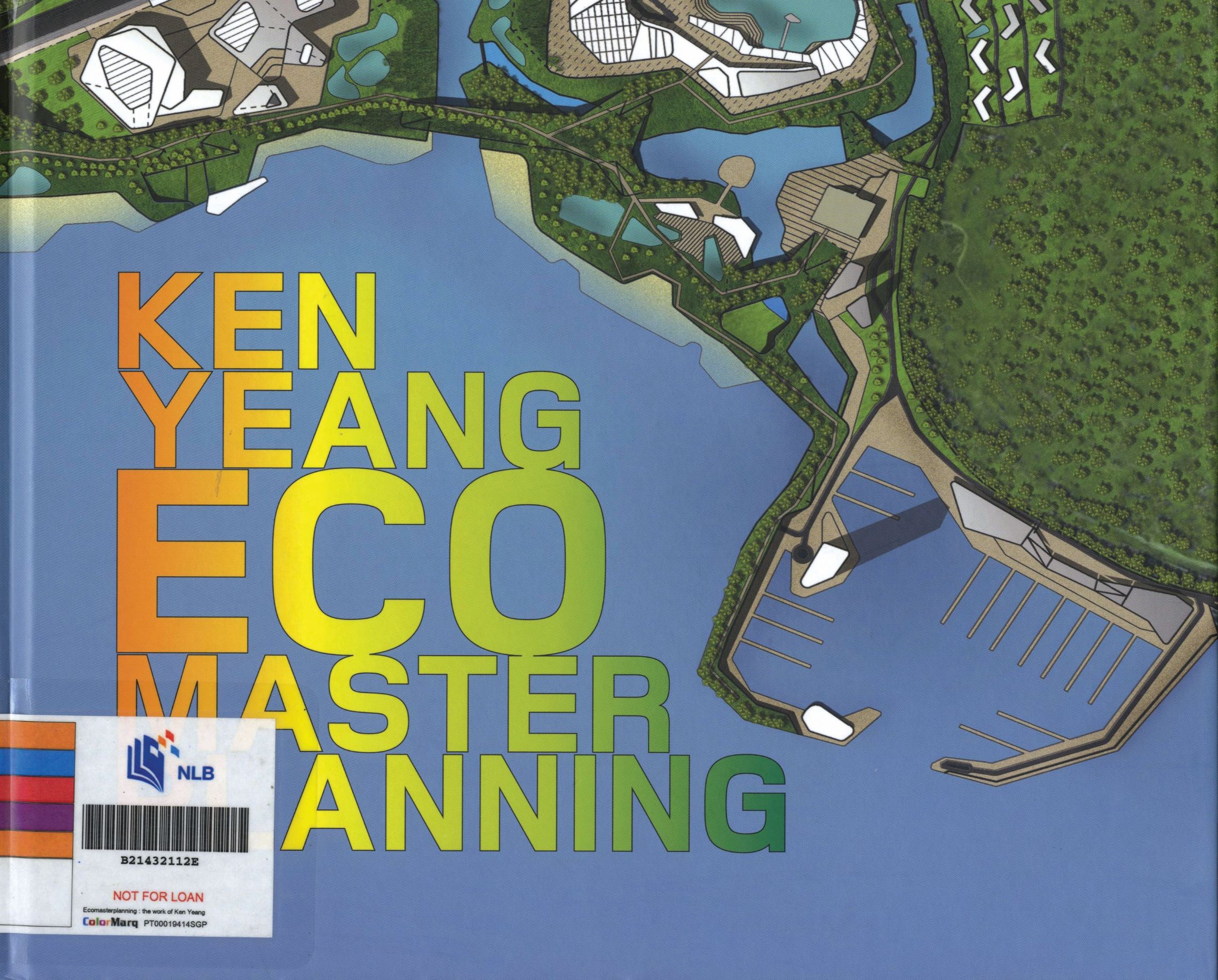
Conclusion
It is currently believed that science and technology can provide effective solutions to most environmental problems. However, efforts to conserve natural resources and preserve the wilderness and even local culture should not be overlooked to ensure a healthy environment for all living beings on Earth. To quote a recent ad from The Singapore Environmental Council, “It starts with their lives. It ends with yours.” Humans and animals are all affected by global warming. Go, read green and live green.
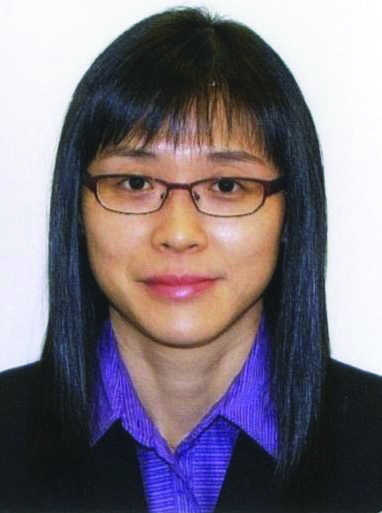
Senior Librarian
Lee Kong Chian Reference Library
National Library
REFERENCES
Al Gore, Our Choice: A Plan To Solve the Climate Crisis (London: Bloomsbury, 2009). (Call no. R 363.73874 GOR)
Andrew Light and Holmes Rolston III, eds., Environmental Ethics: An Anthology (Oxford: Blackwell, 2003). (Call no. R 179.1 ENV)
B. K. Hodge, Alternative Energy Systems and Applications (Hoboken: John Wiley & Sons, 2010). (Call no. R 621.042 HOD)
C. C. Lee and Shun Dar Lin, eds., Handbook of Environmental Engineering Calculations (New York: McGraw Hill, 2007). (Call no. R 628 HAN)
Carl L. Yaws, The Yaws Handbook of Properties for Environmental and Green Engineering (Houston: Gulf Pub. Co., 2008). (Call no. R 660 YAW)
David Cuff and Andrew S. Goudie, eds., The Oxford Companion to Global Change (New York: Oxford University Press, 2009). (Call no. R 363.7 OXF)
David B. Sandalow, Plug-In Electric Vehicles: What Role for Washington? (Washington, D.C.: Brookings Institution Press, 2009). (Call no. R 388.32 PLU)
David W. Orr, Earth in Mind: On Education, Environment, and the Human Prospect (Washington, D.C.: Island Press, 2004). (Call no. R 363.70071 ORR)
Edward Humes, Eco Barons: The Dreamers, Schemers, and Millionaires Who Are Saving Our Planet (New York: Ecco, 2009). (Call no. R 363.70092273 HUM)
Francis M. Vanek and Louis D. Albright, Energy Systems Engineering: Evaluation and Implementation (New York: McGraw-Hill, 2008). (Call no. R 621.4 VAN)
Gil Friend, Nicholas Kordesch and Benjamin Privitt, The Truth About Green Business (N.J.: FT Pres, 2009). (Call no. RBUS 658.4083 FRI)
Harvard Business Review on Green Business Strategy (Boston: Harvard Business School Pub, 2007). (Call no. RBUS 658.4083 HAR)
Joel Makower and Cara Pike, Strategies for the Green Economy: Opportunities and Challenges in the New World of Business (New York: McGraw-Hill, 2009). (Call no. RBUS 658.4083 MAK)
John Rubino, Clean Money: Picking Winners in the Green-Tech Boom (Hoboken: John Wiley & Sons, 2009). (Call no. RBUS 332.6 RUB)
Ken Yeang, Eco Master Planning (Hoboken: Chichester, 2009). (Call no. RSEA 720.47 YEA)
Lindsay Patrick Wesson, Green Reads: Best Environmental Resources for Youth, K-12 (Calif. Libraries Unlimited/ABC-CLIO, 2009)
Martin Melaver and Phyllis Mueller, eds., The Green Building Bottom Line: The Real Cost of Sustainable Building (New York: McGraw-Hill, 2009). (Call no. R 690.8047 GRE)
Mats Larsson, Global Energy Transformation: Four Necessary Steps To Make Clean Energy the Next Success Story (New York: Palgrave Macmillan, 2009). (Call no. R 333.79 LAR)
Michael R. Greenberg, Environmental Policy Analysis and Practice (N.J.: Rutgers University Press, 2007). (Call no. R 363.700973 GRE)
Nicholas Stern, The Economics of Climate Change: The Stern Review (Cambridge, UK: Cambridge University Press, 2007). (Call no. R 363.73874 GRE)
Ooi Giok Ling and Belinda Yuen, eds., World Cities: Achieving Liveability and Vibrancy (Singapore: World Scientific, 2010). (Call no. RSING 338.927 WOR)
Peter Newman, Timothy Beatley and Heather Boyer, Resilient Cities: Responding to Peak Oil and Climate Change (Washington, D.C.: Island Press, 2009). (Call no.: R 307.76 NEW)
Philip Jodidio, Grüne Architektur Heute! = L’architecture Verte D’aujourd’hui! [Green architecture now!] ([Germany]: Taschen, 2009). (Call no. RART 720.47 JOD)
Rachel Carson, Silent Spring (Boston: Houghton Mifflin, 1994)
Ron Pernick and Clint Wilder, The Clean Tech Revolution: Discover the Top Trends, Technologies, and Companies To Watch (New York: Collins Business, 2008). (Call no.: R 333.794 PER)
Thomas L. Friedman, Hot, Flat, and Crowded: Why We Need a Green Revolution – And How It Can Renew America (New York: Farrar, Straus and Giroux, 2008). (Call no. R 363.705250973 FRI)
Ulrich Bethscheider-Kieser, Future Cars: Bio Fuel, Hybrid, Electric, Hydrogen, Fuel Economy in All Sizes and Shapes (Ludwigsburg: Avedition, 2008). (Call no. R 629.229 BET)
NOTES
-
“Human Impact Report: Climate Change - The Anatomy of a Silent Crisis,” Global Humanitarian Forum, accessed 18 January 2010, https://gsdrc.org/document-library/human-impact-report-climate-change-the-anatomy-of-a-silent-crisis/#:~:text=This%20report%20documents%20the%20devastation,people%20are%20at%20extreme%20risk. ↩
-
“World Energy Outlook 2009,” International Energy Agency, November 2009, https://www.iea.org/reports/world-energy-outlook-2009 ↩
-
Breakthrough Institute and the Information Technology and Innovation Foundation, “Rising Tigers, Sleeping Giant: Asian Nations Set To Dominate the Clean Energy Race by Out-Investing the United States,” published November 2009, https://s3.us-east-2.amazonaws.com/uploads.thebreakthrough.org/legacy/blog/Rising_Tigers.pdf ↩
-
Chee K. G, “High Hopes for Singapore Cleantech,” Cleantech, published1 March 2009. ↩
-
National Library Board, eResources, accessed 18 January 2010, http://eresources.nlb.gov.sg/ ↩
-
“GreenDex: Survey of Sustainable Consumption,” National Geographic, accessed 2009. ↩
-
“Beware the Great “Greenwashing” Con, Experts Warn,” Independent, 6 December 2009. ↩
-
“A Strategic Plan,” Singapore Green Building Council, accessed 2009. ↩
-
“Electric Vehicles Test Bedding,” Energy Market Authority, accessed 2009, https://www.ema.gov.sg/Electric_Vehicles_Test_Bed.aspx ↩

